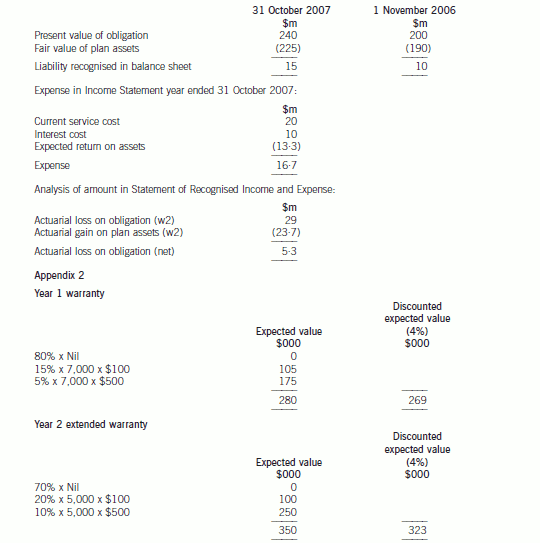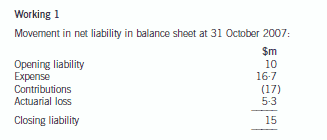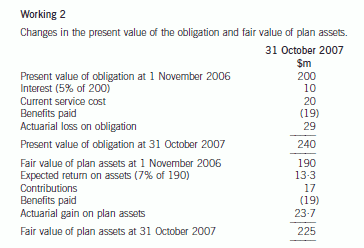不知道如何申请ACCA商业会计证书申请?看这里
发布时间:2021-04-04
众所周知ACCA作为著名的国际财经组织,在全球一直都有着比较广泛的影响力。ACCA在全球各地设立代表处并开展工作,致力于当地财会行业的发展,及推动当地社会在经济发展进程中的公平性和透明度。截至目前,ACCA在全球拥有超过219,000名会员和527,000名学员。他们活跃于全球的各个领域,是备受国际认可和行业青睐的专业会计师。但是很多第一次备考ACCA考试的考生都不知道怎么申请ACCA商业会计证书,接下来就和51题库考试学习网一起去了解下吧!
一、申请初级商业会计证书Diploma in accounting and Business
1、acca学员通过前3门考试。
2、通过网上基本道德测试。
登录myacca,导航目录里找 Navigation menu,会找到 Ethicsige&Professionalism,里面有两个,前三门过完需要做的是foundation in professionalism module。
3、系统自动生成初级商业会计证书。
二、申请高级商业会计证书Advanced diploma in accounting and business
1、acca学员需要通过前9门考试,至少两门是自己考的。
2、通过了网上职业道德测试。
登录myacca,导航目录里找 Navigation menu,会找到 Ethicsige&Professionalism,里面有两个,前9门过完需要做的是professional ethics module,测试的是前面一些基本知识。
3、还有一些case study,看完之后,要上交一份有字数限制的小论文,要用最简洁的话讲,主要是学到了什么,成为一名专业会计师提供了什么帮助。上交后,等差不多三到五天。
4、acca审核后,自动生成高级商业会计证书。
三、如何打印初/高级商业会计证书
这两个证明acca不再寄给学员,如果需要,自己打印出来,在导航目录里找 exam status&result,点击进入,右边有 print a certificate,选择想打印的 certificate,点击 view certificate,就可以下载PDF文件啦!
温馨提示:如果下载不了,可能是IE窗口有拦截,或者无拦截还不行,可能需要更换浏览器。
以上就是51题库考试学习网给大家分享的全部内容,希望能够帮到大家!预祝各位取得满意的成绩,如需了解更多相关内容,请关注51题库考试学习网!
下面小编为大家准备了 ACCA考试 的相关考题,供大家学习参考。
2 Marrgrett, a public limited company, is currently planning to acquire and sell interests in other entities and has asked
for advice on the impact of IFRS3 (Revised) ‘Business Combinations’ and IAS27 (Revised) ‘Consolidated and Separate
Financial Statements’. The company is particularly concerned about the impact on earnings, net assets and goodwill
at the acquisition date and any ongoing earnings impact that the new standards may have.
The company is considering purchasing additional shares in an associate, Josey, a public limited company. The
holding will increase from 30% stake to 70% stake by offering the shareholders of Josey, cash and shares in
Marrgrett. Marrgrett anticipates that it will pay $5 million in transaction costs to lawyers and bankers. Josey had
previously been the subject of a management buyout. In order that the current management shareholders may remain
in the business, Marrgrett is going to offer them share options in Josey subject to them remaining in employment for
two years after the acquisition. Additionally, Marrgrett will offer the same shareholders, shares in the holding company
which are contingent upon a certain level of profitability being achieved by Josey. Each shareholder will receive shares
of the holding company up to a value of $50,000, if Josey achieves a pre-determined rate of return on capital
employed for the next two years.
Josey has several marketing-related intangible assets that are used primarily in marketing or promotion of its products.
These include trade names, internet domain names and non-competition agreements. These are not currently
recognised in Josey’s financial statements.
Marrgrett does not wish to measure the non-controlling interest in subsidiaries on the basis of the proportionate
interest in the identifiable net assets, but wishes to use the ‘full goodwill’ method on the transaction. Marrgrett is
unsure as to whether this method is mandatory, or what the effects are of recognising ‘full goodwill’. Additionally the
company is unsure as to whether the nature of the consideration would affect the calculation of goodwill.
To finance the acquisition of Josey, Marrgrett intends to dispose of a partial interest in two subsidiaries. Marrgrett will
retain control of the first subsidiary but will sell the controlling interest in the second subsidiary which will become
an associate. Because of its plans to change the overall structure of the business, Marrgrett wishes to recognise a
re-organisation provision at the date of the business combination.
Required:
Discuss the principles and the nature of the accounting treatment of the above plans under International Financial
Reporting Standards setting out any impact that IFRS3 (Revised) ‘Business Combinations’ and IAS27 (Revised)
‘Consolidated and Separate Financial Statements’ might have on the earnings and net assets of the group.
Note: this requirement includes 2 professional marks for the quality of the discussion.
(25 marks)
2 IFRS3 (Revised) is a further development of the acquisition model and represents a significant change in accounting for business
combinations. The consideration is the amount paid for the business acquired and is measured at fair value. Consideration will
include cash, assets, contingent consideration, equity instruments, options and warrants. It also includes the fair value of all equity
interests that the acquirer may have held previously in the acquired business. The principles to be applied are that:
(a) a business combination occurs only in respect of the transaction that gives one entity control of another
(b) the identifiable net assets of the acquiree are re-measured to their fair value on the date of the acquisition
(c) NCI are measured on the date of acquisition under one of the two options permitted by IFRS3 (Revised).
An equity interest previously held in the acquiree which qualified as an associate under IAS28 is similarly treated as if it were
disposed of and reacquired at fair value on the acquisition date. Accordingly, it is re-measured to its acquisition date fair value, and
any resulting gain or loss compared to its carrying amount under IAS28 is recognised in profit or loss. Thus the 30% holding in
the associate which was previously held will be included in the consideration. If the carrying amount of the interest in the associate
is not held at fair value at the acquisition date, the interest should be measured to fair value and the resulting gain or loss should
be recognised in profit or loss. The business combination has effectively been achieved in stages.
The fees payable in transaction costs are not deemed to be part of the consideration paid to the seller of the shares. They are not
assets of the purchased business that are recognised on acquisition. Therefore, they should be expensed as incurred and the
services received. Transaction costs relating to the issue of debt or equity, if they are directly attributable, will not be expensed but
deducted from debt or equity on initial recognition.
It is common for part of the consideration to be contingent upon future events. Marrgrett wishes some of the existing
shareholders/employees to remain in the business and has, therefore, offered share options as an incentive to these persons. The
issue is whether these options form. part of the purchase consideration or are compensation for post-acquisition services. The
conditions attached to the award will determine the accounting treatment. In this case there are employment conditions and,
therefore, the options should be treated as compensation and valued under IFRS2 ‘Share based payment’. Thus a charge will
appear in post-acquisition earnings for employee services as the options were awarded to reward future services of employees
rather than to acquire the business.
The additional shares to a fixed value of $50,000 are contingent upon the future returns on capital employed. Marrgrett only wants
to make additional payments if the business is successful. All consideration should be fair valued at the date of acquisition,
including the above contingent consideration. The contingent consideration payable in shares where the number of shares varies
to give the recipient a fixed value ($50,000) meets the definition of a financial liability under IAS32 ‘Financial Instruments:
Presentation’. As a result the liability will have to be fair valued and any subsequent remeasurement will be recognised in the
income statement. There is no requirement under IFRS3 (Revised) for the payments to be probable.
Intangible assets should be recognised on acquisition under IFRS3 (Revised). These include trade names, domain names, and
non-competition agreements. Thus these assets will be recognised and goodwill effectively reduced. The additional clarity in
IFRS3 (Revised) could mean that more intangible assets will be recognised on acquisition. As a result of this, the post-combination
income statement may have more charges for amortisation of the intangibles than was previously the case.
The revised standard gives entities the option, on a transaction by transaction basis, to measure non-controlling interests (NCI) at
the fair value of the proportion of identifiable net assets or at full fair value. The first option results in measurement of goodwill on
consolidation which would normally be little different from the previous standard. The second approach records goodwill on the
NCI as well as on the acquired controlling interest. Goodwill is the residual but may differ from that under the previous standard
because of the nature of the valuation of the consideration as previously held interests are fair valued and also because goodwill
can be measured in the above two ways (full goodwill and partial goodwill). The standard gives entities a choice for each separate
business combination of recognising full or partial goodwill. Recognising full goodwill will increase reported net assets and may
result in any future impairment of goodwill being of greater value. Measuring NCI at fair value may have some difficulties but
goodwill impairment testing may be easier under full goodwill as there is no need to gross-up goodwill for partly-owned
subsidiaries. The type of consideration does not affect goodwill regardless of how the payment is structured. Consideration is
recognised in total at its fair value at the date of acquisition. The form. of the consideration will not affect goodwill but the structure
of the payments can affect post-acquisition profits. Contingent payments which are deemed to be debt instruments will be
remeasured at each reporting date with the change going to the income statement.
Marrgrett has a maximum period of 12 months to finalise the acquisition accounting but will not be able to recognise the
re-organisation provision at the date of the business combination. The ability of the acquirer to recognise a liability for reducing or
changing the activities of the acquiree is restricted. A restructuring provision can only be recognised in a business combination
when the acquiree has at the acquisition date, an existing liability which complies with IAS37 ‘Provisions, contingent liabilities and
contingent assets’. These conditions are unlikely to exist at the acquisition date. A restructuring plan that is conditional on the
completion of a business combination is not recognised in accounting for the acquisition but the expense will be met against
post-acquisition earnings.
IAS27 (Revised) uses the economic entity model whereas previous practice used the parent company approach. The economic
entity model treats all providers of equity capital as shareholders of the entity even where they are not shareholders in the parent.
A partial disposal of an interest in a subsidiary in which control is still retained is seen as a treasury transaction and accounted for
in equity. It does not result in a gain or loss but an increase or decrease in equity. However, where a partial disposal in a subsidiary
results in a loss of control but the retention of an interest in the form. of an associate, then a gain or loss is recognised in the whole
interest. A gain or loss is recognised on the portion that has been sold, and a holding gain or loss is recognised on the interest
retained being the difference between the book value and fair value of the interest. Both gains/losses are recognised in the income
statement.
(b) (i) Discusses the principles involved in accounting for claims made under the above warranty provision.
(6 marks)
(ii) Shows the accounting treatment for the above warranty provision under IAS37 ‘Provisions, Contingent
Liabilities and Contingent Assets’ for the year ended 31 October 2007. (3 marks)
Appropriateness of the format and presentation of the report and communication of advice. (2 marks)
(b) Provisions – IAS37
An entity must recognise a provision under IAS37 if, and only if:
(a) a present obligation (legal or constructive) has arisen as a result of a past event (the obligating event)
(b) it is probable (‘more likely than not’), that an outflow of resources embodying economic benefits will be required to settle
the obligation
(c) the amount can be estimated reliably
An obligating event is an event that creates a legal or constructive obligation and, therefore, results in an enterprise having
no realistic alternative but to settle the obligation. A constructive obligation arises if past practice creates a valid expectation
on the part of a third party. If it is more likely than not that no present obligation exists, the enterprise should disclose a
contingent liability, unless the possibility of an outflow of resources is remote.
The amount recognised as a provision should be the best estimate of the expenditure required to settle the present obligation
at the balance sheet date, that is, the amount that an enterprise would rationally pay to settle the obligation at the balance
sheet date or to transfer it to a third party. This means provisions for large populations of events such as warranties, are
measured at a probability weighted expected value. In reaching its best estimate, the entity should take into account the risks
and uncertainties that surround the underlying events.
Expected cash outflows should be discounted to their present values, where the effect of the time value of money is material
using a risk adjusted rate (it should not reflect risks for which future cash flows have been adjusted). If some or all of the
expenditure required to settle a provision is expected to be reimbursed by another party, the reimbursement should be
recognised as a separate asset when, and only when, it is virtually certain that reimbursement will be received if the entity
settles the obligation. The amount recognised should not exceed the amount of the provision. In measuring a provision future
events should be considered. The provision for the warranty claim will be determined by using the expected value method.
The past event which causes the obligation is the initial sale of the product with the warranty given at that time. It would be
appropriate for the company to make a provision for the Year 1 warranty of $280,000 and Year 2 warranty of $350,000,
which represents the best estimate of the obligation (see Appendix 2). Only if the insurance company have validated the
counter claim will Macaljoy be able to recognise the asset and income. Recovery has to be virtually certain. If it is virtually
certain, then Macaljoy may be able to recognise the asset. Generally contingent assets are never recognised, but disclosed
where an inflow of economic benefits is probable.
The company could discount the provision if it was considered that the time value of money was material. The majority of
provisions will reverse in the short term (within two years) and, therefore, the effects of discounting are likely to be immaterial.
In this case, using the risk adjusted rate (IAS37), the provision would be reduced to $269,000 in Year 1 and $323,000 in
Year 2. The company will have to determine whether this is material.
Appendix 1
The accounting for the defined benefit plan is as follows:



24 What figure should appear in the consolidated balance sheet of the J group as at 31 December 2004 for minority
interest?
A $32,000
B $16,000
C $10,000
D $24,000
20% x 120,000
声明:本文内容由互联网用户自发贡献自行上传,本网站不拥有所有权,未作人工编辑处理,也不承担相关法律责任。如果您发现有涉嫌版权的内容,欢迎发送邮件至:contact@51tk.com 进行举报,并提供相关证据,工作人员会在5个工作日内联系你,一经查实,本站将立刻删除涉嫌侵权内容。
- 2020-01-09
- 2020-02-22
- 2020-01-10
- 2020-02-27
- 2020-01-09
- 2021-10-07
- 2020-01-10
- 2020-02-01
- 2020-02-27
- 2021-05-06
- 2020-02-22
- 2019-06-21
- 2020-01-10
- 2020-02-27
- 2020-01-09
- 2021-01-13
- 2020-01-09
- 2020-01-01
- 2020-01-09
- 2020-02-27
- 2020-01-09
- 2021-04-25
- 2020-01-02
- 2020-01-10
- 2020-01-10
- 2020-09-03
- 2020-01-10
- 2020-08-14
- 2021-01-08
- 2020-01-10